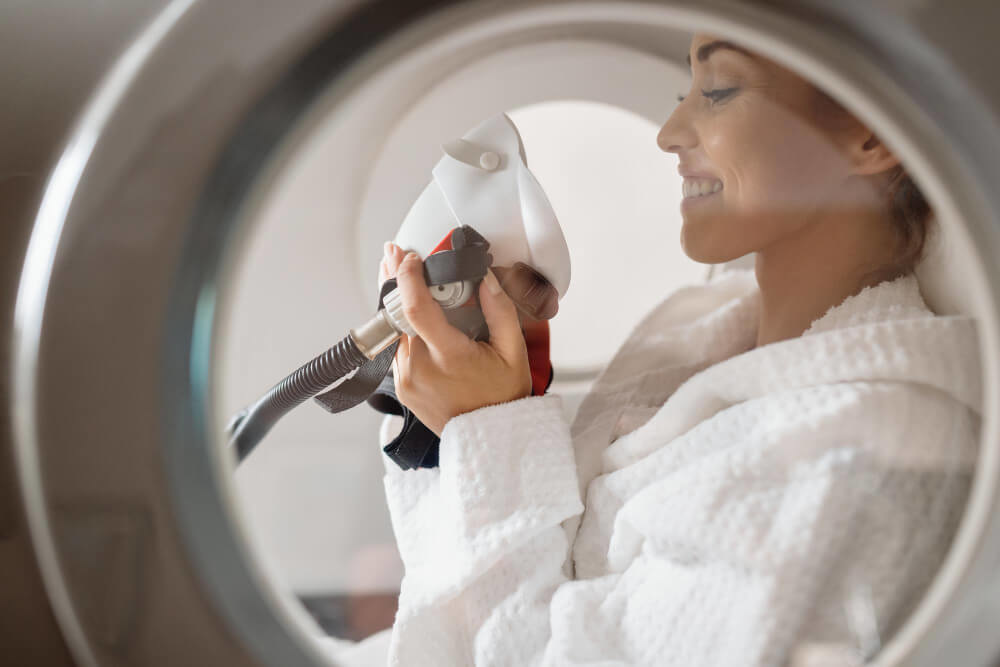The Future of Healing: Why Regenerative Care Training is Reshaping Medicine
Imagine a world where medicine does more than just manage symptoms. Picture a reality where your body’s own innate healing mechanisms are harnessed to repair damage, restore function, and truly reverse the markers of disease and aging. This isn’t science fiction; it is the powerful promise of regenerative care, a field that is rapidly moving from the fringes of research to the forefront of modern clinical practice. It represents a fundamental shift in how we approach health and longevity, focusing on rebuilding and rejuvenating from within.
As this revolutionary field expands, the demand for skilled and knowledgeable practitioners is skyrocketing. The power to guide the body’s healing processes requires a deep understanding of complex biological systems, precise techniques, and a commitment to patient safety. This is why comprehensive regenerative care training has become absolutely essential. It is the bridge between groundbreaking science and effective, real-world application, ensuring that practitioners can deliver on the incredible potential of these therapies safely and ethically.
For healthcare professionals, medics, and clinic owners, embracing regenerative medicine is no longer an option but a necessity for staying relevant and providing the best possible care. It involves mastering protocols that can address the root causes of chronic conditions, injuries, and age-related decline. Proper training equips practitioners with the confidence and competence to navigate this exciting but intricate landscape, transforming their practices and the lives of their patients for the better.

What Exactly Is Regenerative Care?
At its core, regenerative care is a branch of medicine focused on developing methods to regrow, repair, or replace damaged or diseased cells, organs, or tissues. It includes a variety of therapies designed to kickstart the body’s natural repair systems. Instead of using a drug to block a chemical pathway or a surgery to remove a problem, regenerative approaches aim to provide the raw materials and signals the body needs to heal itself.
This field is incredibly diverse, encompassing a range of cutting-edge treatments. You may have heard of some of them, as they are gaining significant attention for their remarkable results. These therapies are not a one-size-fits-all solution but are part of a personalized approach to wellness and recovery.
Think of it like tending a garden. You can spray for pests and pull weeds, which is similar to conventional medicine managing symptoms. Or, you can enrich the soil, provide the right nutrients, and ensure proper sunlight, allowing the plants to thrive and become resilient on their own. Regenerative care is about enriching the body’s internal environment to foster health from the ground up.

How Do Platelet-Rich Plasma (PRP) Therapies Work?
Platelet-Rich Plasma, or PRP, is one of the most well-known regenerative treatments. It starts with a simple blood draw from the patient. That blood is then placed in a centrifuge, a machine that spins at high speed to separate the blood components.
This process concentrates the platelets, which are tiny cell fragments in your blood famous for their role in clotting. But they do much more than that. Platelets are packed with hundreds of growth factors, which are proteins that act as potent signaling molecules. When injected into an injured area, like a knee joint or a tendon, these growth factors orchestrate a powerful healing response, attracting stem cells and promoting the rebuilding of new, healthy tissue.

What Are Stem Cells and Why Are They So Important?
Stem cells are the body’s master cells. They are undifferentiated, meaning they haven’t yet become a specific type of cell. This makes them incredibly versatile, as they have the potential to develop into many different cell types, such as muscle cells, cartilage cells, or bone cells.
There are different sources of stem cells used in regenerative medicine, often harvested from the patient’s own body, typically from bone marrow or adipose (fat) tissue. When these cells are introduced to a damaged area, they can help reduce inflammation, signal other cells to begin repairs, and even differentiate into new cells to replace those that have been lost to injury or disease. Their role is fundamental to the ‘regrowth’ aspect of regenerative care.

What Other Therapies Fall Under This Umbrella?
Beyond PRP and stem cells, the field includes other innovative treatments. Exosome therapy, for example, uses tiny vesicles that cells release to communicate with each other. These exosomes are filled with genetic information and proteins and can be used to direct cell behavior and promote regeneration without using whole cells.
Other therapies might involve specialized matrices or scaffolds that provide a structure for new tissue to grow upon, or the use of specific peptides and growth factors to target and amplify the body’s healing cascades. Each modality has its own unique mechanism and application, highlighting the need for practitioners to have a broad and deep education in the field.

Why is Specialized Training So Critical for Practitioners?
The promise of regenerative medicine is immense, but so is its complexity. These are not simple procedures. They involve handling biological materials, understanding intricate physiological responses, and making critical decisions that directly impact patient outcomes. Without rigorous, standardized training, the risk of suboptimal results or even harm increases significantly.
For medical professionals looking to integrate these services, pursuing a formal regenerative medicine certification for physicians is not just a good idea; it is a professional responsibility. It ensures a practitioner has been vetted and educated according to the highest standards, which builds trust with patients and the wider medical community.
This training goes far beyond just learning how to perform an injection. It is about developing clinical mastery. It involves understanding who the right candidate for a specific procedure is, what the realistic outcomes are, and how to manage patient expectations. It is a holistic education in a new paradigm of medicine.

How Does Training Ensure Patient Safety?
Patient safety is the absolute top priority. Proper training instills a deep knowledge of sterile techniques for drawing blood and processing biologics to prevent infection. It teaches the precise anatomical knowledge required for accurate injections, avoiding nerves and blood vessels to minimize complications.
Furthermore, a well-trained practitioner learns about the potential contraindications. They know which patients should not receive certain treatments due to other health conditions or medications. This careful screening process is one of the most important safety nets in regenerative practice.

Can Training Improve Treatment Effectiveness?
Absolutely. The difference between a successful regenerative procedure and a failed one often comes down to protocol. How was the PRP concentrated? What was the precise cell count? Where exactly was the injection placed? A comprehensive training program covers these critical details.
Practitioners learn the science behind different preparation methods and how they affect the final product. They gain hands-on experience with ultrasound guidance to ensure the therapeutic agent is delivered exactly where it is needed most. This precision is key to maximizing the biological response and achieving the best possible clinical outcome for the patient.

What Is the Role of Genetics in Regenerative Care?
As regenerative medicine becomes more sophisticated, it is intersecting with another revolutionary field: genomics. The future of effective regenerative care is deeply personal, tailored not just to a patient’s condition but to their unique genetic makeup. Understanding a patient’s DNA can provide incredible insights into how they might respond to a particular therapy.
Genetic predispositions can influence everything from inflammation levels to tissue repair capabilities. By analyzing a patient’s genetic markers, a practitioner can make more informed decisions, potentially selecting a therapy that aligns best with the patient’s biological blueprint. This level of personalization is the next frontier in optimizing outcomes.
For anyone interested in the foundational science, understanding the science of genetic testing provides a detailed look at the methods and implications. This knowledge empowers both practitioners and patients to have more meaningful conversations about treatment strategies.

How Can Genetic Information Personalize Treatment?
Imagine two patients with the same knee injury. One patient’s genetics might indicate a robust natural healing ability but a tendency for high inflammation. For them, a therapy focused on modulating the inflammatory response might be most effective. The other patient might have genetic markers suggesting a slower cellular regeneration process, indicating that a therapy with a higher concentration of stem cells or growth factors would be more beneficial.
This is the power of combining genomics with regenerative medicine. It moves treatment from a standardized protocol to a truly individualized strategy. For a broad overview, you can find general information on genetic testing that covers its history and various applications in medicine. This context helps in appreciating its growing role.

Who Sets the Standards for Genetic Testing?
As this field grows, professional organizations play a crucial role in establishing guidelines and best practices to ensure testing is performed accurately and ethically. Groups like the American College of Medical Genetics and Genomics (ACMG) work to create standards for clinical genetics laboratories and provide education for healthcare professionals.
These standards are vital for ensuring that the data used to make clinical decisions is reliable. Public health bodies also contribute to the conversation, offering resources for both providers and the public. You can find helpful guidance from public health organizations like the CDC on what to consider when it comes to genetic tests.
For regenerative practitioners, incorporating genetic insights requires specialized knowledge. It involves knowing which tests are relevant, how to interpret the results in the context of regenerative therapies, and how to communicate this complex information to patients clearly and responsibly.

What Should a Comprehensive Training Program Cover?
A top-tier regenerative care training program is multifaceted, blending deep scientific theory with practical, hands-on skills. It should be designed not just to teach techniques, but to cultivate genuine expertise and clinical intuition.
The curriculum should begin with the fundamental science. This includes cellular biology, the mechanisms of tissue repair, the role of inflammation, and the specific properties of PRP, stem cells, exosomes, and other biologics. A strong theoretical foundation is essential for making informed clinical judgments.
Beyond the basics, the program must cover the entire patient journey. This starts with patient selection and consultation, moves through the procedure itself, and continues with post-procedure care and follow-up. Each step is critical for success.

Is Hands-On Practice Included?
Theoretical knowledge is useless without practical application. A key component of any effective training program is extensive hands-on practice. This often involves using advanced simulation models and working with state-of-the-art equipment under the direct supervision of experienced instructors.
Practitioners should become proficient in using tools like ultrasound machines for diagnostic assessments and injection guidance. This skill alone can dramatically improve the precision and effectiveness of treatments. The goal is for every participant to leave feeling confident in their ability to perform procedures safely and competently.

What About When Things Don’t Go as Planned?
Medicine is never entirely predictable. Even with perfect technique, some patients may not respond as expected. An essential, yet often overlooked, part of training is learning how to manage these situations. This includes a deep dive into troubleshooting poor outcomes in regenerative procedures.
This advanced training covers how to analyze a suboptimal result, identify potential contributing factors, and develop a plan for next steps. It teaches practitioners how to adjust protocols, consider alternative therapies, and manage patient communication during challenging times. This ability to problem-solve is what separates a good practitioner from a great one.

How Does This Training Impact a Medical Practice?
Integrating regenerative care is a transformative step for any medical practice. It immediately positions the clinic at the cutting edge of medicine, attracting a new demographic of patients who are proactively seeking solutions for longevity, peak performance, and chronic conditions that have not responded to conventional treatments.
Offering these advanced therapies creates a significant new revenue stream, but the impact goes far beyond financials. It elevates the reputation of the practice, establishing it as a center for innovation and excellence. This can lead to increased referrals from other practitioners and greater visibility in the community.
Most importantly, it re-energizes the clinical team. Providing treatments that yield tangible, life-changing results for patients is incredibly rewarding. It renews a sense of purpose and excitement in the practice of medicine, reminding providers why they chose this profession in the first place.

How Does It Benefit Patients?
For patients, the benefits are profound. They gain access to minimally invasive treatment options that can alleviate pain, improve function, and enhance their quality of life. For many, regenerative care offers hope where there was none before.
A well-trained practitioner can provide a level of personalized care that is rare in today’s healthcare system. They take the time to understand the patient’s goals, conduct a thorough evaluation, and develop a customized treatment plan. This patient-centric approach builds strong, lasting relationships based on trust and shared success.
Ultimately, patients receive care that is not just about masking symptoms but about fundamentally healing the body. This approach empowers them to take an active role in their health journey, leading to better long-term outcomes and a greater sense of well-being.
The world of medicine is evolving, and regenerative care is leading the charge. For practitioners ready to be part of this transformation, the journey begins with a commitment to exceptional education. By mastering these protocols, you can unlock new possibilities for your patients and your practice, truly shaping the future of healing.
Frequently Asked Questions

How will this training impact my practice and potential return on investment?
Upon completing our workshop, you will be equipped with the protocols and business insights needed to immediately integrate PRP and stem cell therapies into your service offerings. This allows you to attract a new demographic of patients seeking cutting-edge, minimally invasive aesthetic and restorative treatments. Adding these high-demand, cash-based services diversifies your practice’s revenue streams and positions you as a leader in the regenerative medicine field.
The return on investment for this training is typically very rapid and substantial. Since these procedures are not dependent on insurance reimbursements, you can set competitive pricing that ensures profitability. Most practitioners find they recoup the entire cost of the workshop after performing just a handful of treatments, making it a sound financial decision for long-term practice growth.

What specific qualifications or prerequisites are required to attend this workshop?
This advanced training is specifically designed for licensed medical professionals who are eligible to perform injections within their scope of practice. Ideal candidates include physicians (MD, DO), nurse practitioners (NP), physician assistants (PA), and dentists (DDS, DMD) who wish to expand into regenerative aesthetics or orthopedics. The curriculum is structured to build upon your existing medical knowledge and clinical skills.
While a solid understanding of anatomy is essential, direct prior experience with PRP is not required as we cover the fundamentals extensively. The primary prerequisite is holding an active and unrestricted professional license in your state or country. This ensures that you can legally and safely apply the techniques you learn as soon as you return to your practice.

What does the "hands-on" component of the workshop actually involve?
The "hands-on" component is the core of our training, ensuring you move beyond theory and into confident practice. You will work in a small group setting to perform complete procedures on live models under the close, one-on-one supervision of our expert instructors. This includes every critical step, from patient assessment and blood draws to centrifuging and administering the injections for various indications.
This immersive experience is designed to build muscle memory and practical confidence in a safe, controlled clinical environment. Our low instructor-to-participant ratio guarantees you receive personalized feedback and can ask detailed questions while performing the techniques. You will leave with the certainty that you can replicate the entire workflow effectively and safely in your own practice.
Discover the most comprehensive functional medicine training, longevity training, and biohacking certification programs designed specifically for healthcare professionals, medics, and clinic owners who want to master regenerative medicine protocols and anti-aging therapies. Elevate your practice with Talking Longevity.







